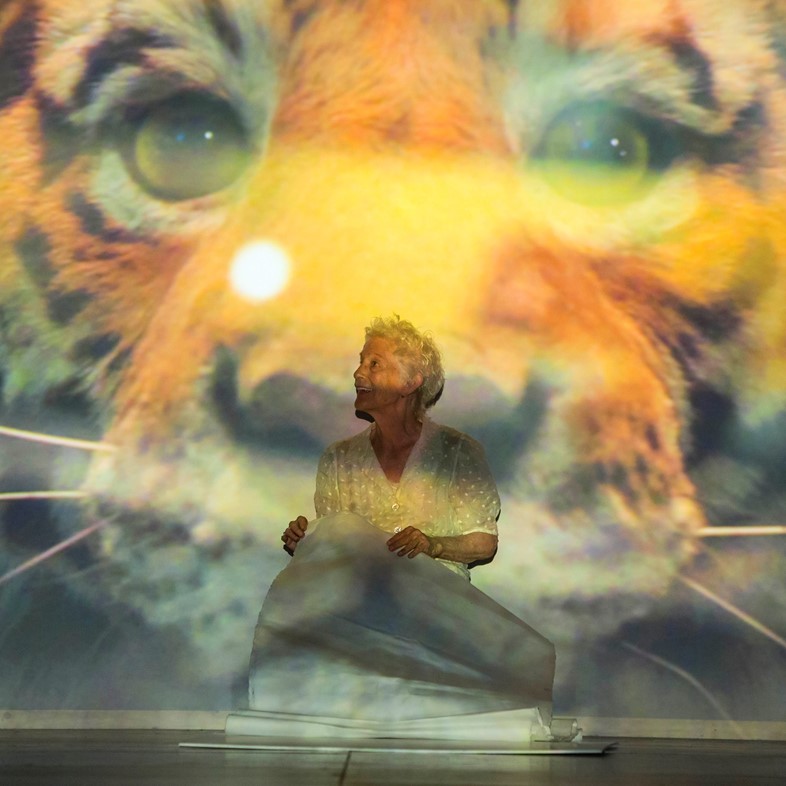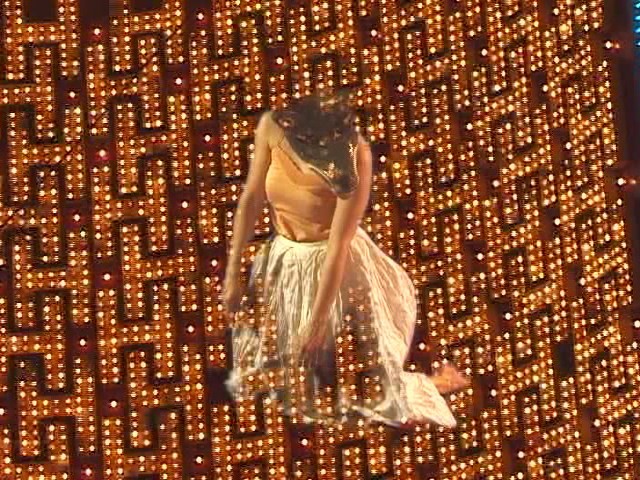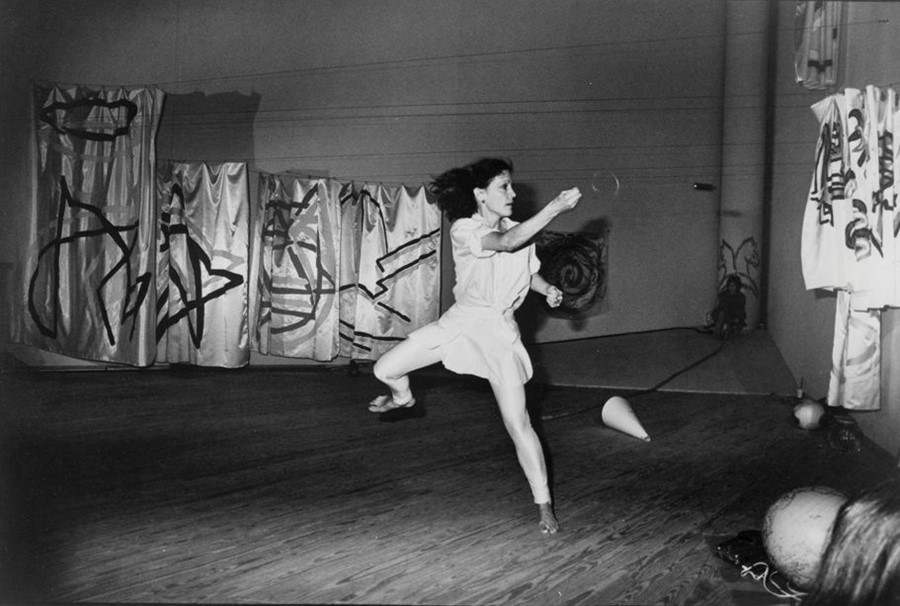Now an octogenarian, Joan Jonas sees her first ever retrospective take place at Tate Modern, proving that her legacy is vital
“I still do live performances and I will as long as I can. I like the relationship to the audience; it’s very important to me,” said Joan Jonas, almost a decade ago. Evidently, she is a woman true to her word; at nearly 82 years old, she recently performed at her newly opened retrospective at Tate Modern – painting a large snake on the concrete floor, accompanied by the jazz pianist Jason Moran – reiterating her status as one of the most important contemporary female artists alive today.
Jonas rose to prominence during the 1970s as one of the first performance artists to incorporate video and film into her work. Her ritualistic practice, which treads the line between the gallery space and the theatrical stage, includes props, scripts, costume and dance, to recount mythic fairy tales through a visual and emotional landscape. Here, we examine why Jonas deserves a place in the AnOther Woman hall of fame.

Seminal Moments
Born in 1936 in New York City, Jonas relocated to Boston, Massachusetts as a young woman to study for her bachelor’s degree in Art History at Mount Holyoke College. In 1965, she graduated with an MFA in Sculpture from Columbia University, becoming immersed in the downtown arts scene of the era. It was here that her extensive and groundbreaking experimentation with multimedia began. “In the late 50s and early 60s, there was no such thing as video or performance art,” Jonas told Dazed. “I went to art school in New York and I was dissatisfied with my work as a sculptor, but I was very lucky to know people who were using performance as art, like Claes Oldenburg, Robert Rauschenberg, and the dancers who worked with them – Yvonne Rainer, Simone Forti, Lucinda Childs – as well as composers like Phil Glass.”
Between 1968-1971, Jonas performed her first – and seminal – work Mirror Pieces, utilising the reflective surfaces as props. “I’m not just using it as a narcissistic reflection, but I was thinking of that too – you can’t not think of it,” she said. “The mirror was the first device I used to alter the perception of an audience in relation to the performance space. Then, in the closed-circuit system of the video monitor, camera, and projection, the audience saw details of a live performance simultaneously with the live event. In The Juniper Tree (1976), a literary text became a medium and was combined with ideas from these earlier devices. “In a way, these were all spaces for play in which I distanced myself from the viewer in and behind the object. It was my way of developing a language of the moving image.” Jonas has continually toyed with these central themes and mediums throughout her five-decade-long career. She has taught at The Massachusetts Institute of Technology since 1998 as Professor Emerita in the MIT Program in Art, Culture, and Technology, representing the United States at the 2015 Venice Biennale, with her most recent work exploring the relationship between new digital media and performance in multichannel video installations.

Defining Features
While Jonas has a reputation for commanding all she does, her stature is slight and her large poodle (named Ozu after the Japanese filmmaker) dwarfs her frame. This comes as a shock to those who meet her. “Other people have said the same thing,” Jonas remarked of her size. “But that’s what happens when you’re photographed. You’re not you. I was just in Jamaica, and I met Grace Jones, and she is not tall at all. She’s only a little bigger than me.”
In her video performances between 1972 and 1976, Jonas transformed into her narcissistic alter ego Organic Honey; an “electronic erotic seductress”. Despite formulating such ostentatious characters in her work, in life, Jonas never dressed to turn heads. Her style remains understated and minimalistic, with a crop of white hair offsetting a pair of dark glasses her signature aesthetic.

She’s an AnOther Woman Because...
“The convention that you have to behave well makes one shyer,” said Joan Jonas. “One excitement of being a woman artist is, in fact, that you can control your public face more. That’s exactly why I hate descriptions of women artists that begin with: She’s so personal or she’s so eccentric. My work is really something made for the public. I never want it to be described as autobiographical.”
Despite this, Jonas’ work feels eerily prescient in the era of the selfie, as though she were granted a premonition of the future whilst undertaking one of her ceremonial performances. Her work with mirrors and video cameras explored representations of the female body – which now, more than ever, is placed under constant scrutiny through the lens of social media. As the lines between performance art and real life become increasingly blurred through advancements in the technology we use to continually document our lives, Jonas’ legacy in contemporary art grows ever more vital.
Joan Jonas runs at Tate Modern, London until August 5, 2018.
